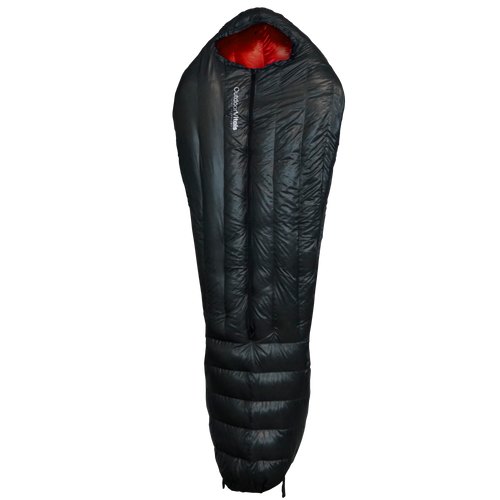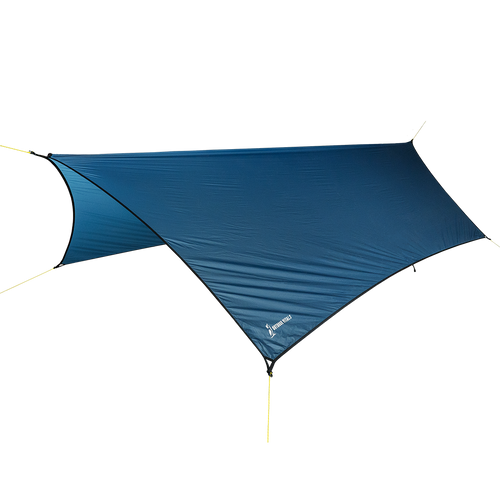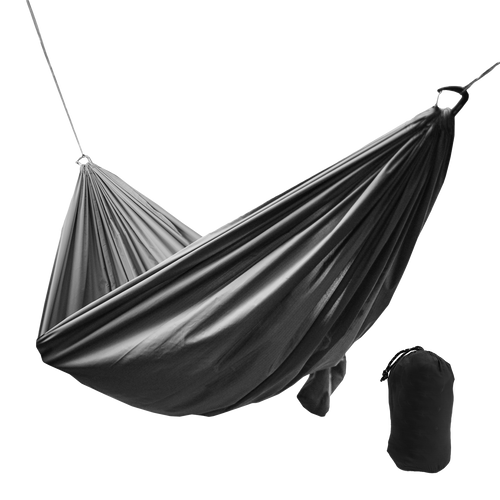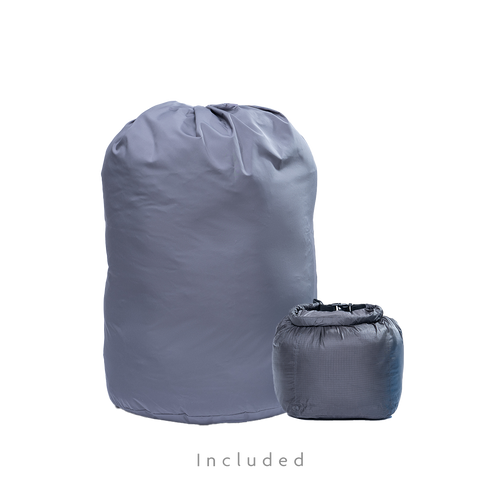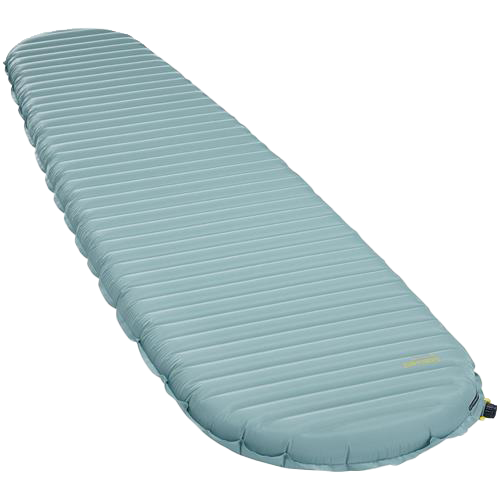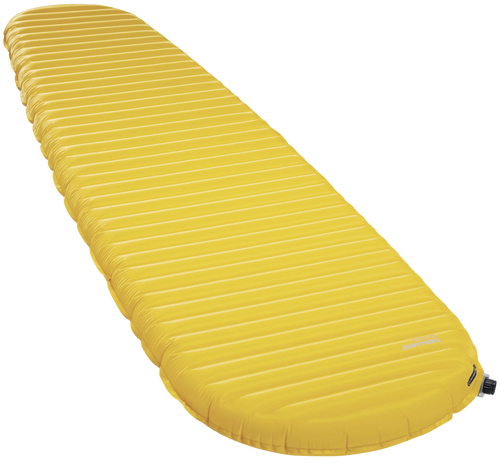Protective Layering - Staying Safe & Comfortable in the Backcountry
Is anything as miserable as getting soaked while out on a backpacking trip?
In the backcountry, we need clothing that performs.
We need a collection of clothing that functions as tools to allow us to remain active in the backcountry as long as we want, in any season.
By utilizing an Adaptive Performance Clothing System, we will have the right collection of clothing that will keep our bodies performing optimally in the inevitable changing conditions like weather, terrain, and strenuousness of the journey.
We've actually come up with 10 main clothing items that you can mix and match depending on the conditions of your adventure. If you have all 10 items, you'll be prepared for almost any trip into the backcountry, no matter what time of year. To read more about these items, click here.
This Adaptive 10 Piece Layering System is categorized into 3 collections: Kinetic, Protective, & Static.
The Protective Collection
The protective collection's purpose is to reduce or prevent heat loss from evaporative cooling and convection, and provide protection from insects.
Of the natural elements we need to guard against, precipitation and wind are among those that can reduce our body temperature to unsafe levels the fastest.
The Protective Collection manages these conditions with the implementation of a windbreaker, rain jacket, and rain pants. In order to address these conditions efficiently, the collection has to balance performance, weight and durability.
We should never feel like we can’t justify packing all or part of this collection for our trips because it’s too bulky, too heavy, or we’re afraid of destroying it. Rain gear is something we never want to have to use, but when we do, there is nothing else that can do its job.
We absolutely need it.
Wind is an invisible, yet incredibly powerful force that can quickly strip our bodies of heat. This is desirable in hot conditions when we need to avoid overheating, but even in mild temperatures, wind can take away more heat than we can generate through physical activity. A lightweight windbreaker can often provide just the right amount of heat retention to allow us to maintain an optimal body temperature, and maintain a vigorous physical pace without overheating.
Clothing in the Protective Collection of an Adaptive Layering System also provide an additional barrier to mosquitoes and other bugs. Relentless swarms of mosquitoes can and will drive people straight out of the backcountry, abandoning their trip. Bug bites aren’t only uncomfortable and annoying, but they can lead to serious medical emergencies for some people. Implementing this collection for bug protection can also help supplement bug spray.
Category: Rain Jackets & Pants
Wet clothing and skin accelerate heat loss dramatically when they are exposed to open air that is lower temperature than our bodies. This is the effect of evaporative heat loss. In conditions where we need to prevent or reduce heat loss to preserve body temperature, the situation becomes significantly worse with exposure to wind. Even a slight breeze moving across a wet body will increase convective heat loss exponentially.
If we are not prepared to manage this properly, it can quickly lead to hypothermia in anything but hot weather. The important concept to remember is that ‘windy and wet’ are dangerous conditions. Our rain gear is protection from wet and windy conditions that lead to excessive heat loss.
In the Rain Jacket and Pants category ( rain gear ), its primary purpose is to preserve our body temperature and protect us from evaporative and convective heat loss.
The method by which our rain gear accomplishes this is to prevent our bodies and clothing from becoming wet, and/or to maintain a warm micro-environment within our rain gear.
**While it’s uncommon, there are conditions where our body temperature can remain healthy even when we are totally wet. The ambient temperature has to be very warm, there has to be little to no wind, and our physical exertion has to be very high. However, this can be very risky without a lot of experience and safe experimentation to know where the line is.
Aside from that caveat, we will assume that the application of rain gear is warranted because for our context, when we need rain gear, it’s because the conditions are such that without it we will quickly become uncomfortable and cold. When we need rain gear, nothing else will do.
For our purposes, we want waterproof breathable rain gear ( WPB ). There are other types of rain gear; a poncho or other non-breathable rain gear, but for our application WPB offers the most versatility and efficiency to allow us to keep moving in the rain.
The top priority for rain gear is to stop precipitation from reaching our bodies.
It’s a physical barrier to precipitation. But because we need to wear our rain gear while physically active, we need it to be breathable too. This means that we need our rain gear to stop water from getting in, while allowing our heat generated moisture to escape.
It's a safety item, because its purpose is so centered on preserving body heat. We don’t want to have to use it, but if the conditions call for it then we need to have it with us. Prior to embarking on our trips we should always be aware of the most up to date and accurate weather information available to determine what rain gear to pack.
That isn’t foolproof, but it’s very necessary. Keep in mind that this clothing system is adaptable; we don’t always need to pack a rain jacket AND pants. If the forecasted weather doesn’t show much chance for rain then just packing a jacket makes sense. Time in the field is the best educator and weather forecaster though. There are very few weather conditions that could justify not packing a rain jacket at a minimum. But they do exist. In some desert areas in the lower 48, they hardly ever experience much rain, so if the weather forecast shows zero percent chance of rain for several days prior to and after the planned trip dates, then it could be justified to leave the rain gear at home. With that being said, if we select the right rain gear, a rain jacket at a minimum should be something that we pack almost all the time without regret even if we don’t use it.
When we’re selecting rain gear, there are many factors that affect the function and performance of the rain gear, but we can generalize the most important factors into 2 points of focus: the laminate and the design / construction.
What is laminate?
WPB (Waterproof breathable) rain gear functions ( stops water from coming in, and allows moisture vapor to escape ) by utilizing laminate fabrics, which means the fabric is a composite of multiple layers bonded together to make a laminate fabric. The laminate is the end product, or the fabric that the jacket is made out of.
There are various configurations of laminates, but common configurations are 3 layer, 2.5 layer, and 2 layer. High performance rain gear laminates are generally constructed of an outer fabric ( face fabric ), a membrane, and some type of backer, which can be a fabric or engineered texture coating. A lining fabric would be considered a full layer ( like in a 3 layer laminate ), and an engineered texture coating is usually referred to as a half layer ( 2.5 layer ).
A lining layer does increase the overall durability and comfort of a laminate, but it also increases weight while decreasing breathability of the laminate. A half layer backer will generally be comfortable, allow more breathability, weigh less, and be slightly less durable.
Quality performance rain gear will be made of a high quality laminate that has been tested in a lab and extensively field tested. It’s important to focus on the whole laminate, not just the membrane that is used. Most human bodies can’t feel the differences in lab testing numbers from one laminate to another, but we certainly can tell if we’re getting soaked from the outside or dying of sweat on the inside.
We need a laminate that will consistently stop water, and breathe well enough that with a reduced level of exertion, we won’t overheat.
At the same time we may need to frequently remind ourselves to keep our expectations in check, and make sure we are conscious of our physical output.
Each layer in the laminate has a function or purpose.
The outer fabric, or face fabric, protects the membrane and our bodies from physical harm, outside elements, dirt, contaminants, and of course water, via the presence of a DWR ( Durable Water Repellent ) treatment. The face fabric is the component that is most exposed to the environment, the terrain, and physical objects like foliage. So the most effective way to address laminate durability is to utilize a face fabric that is consistent with how durability is prioritized. In general, the more durable a laminate is, the more robust and heavy the face fabric will be. The face fabric in conjunction with DWR is the first line of defense in repelling water. Good rain gear will have a DWR ( Durable Water Repellent ) treatment, which is a chemical treatment applied to the face fabric. It is not a permanent treatment, meaning it will wear off. As its name implies, it helps repel water, or not allow water to adhere to the face fabric.
That is important for three reasons.
- Preventing water from absorbing into the face fabric reduces the burden on the membrane and reduces the amount of pressure against the membrane from the outside.
- It prevents or delays the laminate from wetting out.
- Keeping the face fabric dry optimizes the breathability of the laminate.
Membranes
The membrane is the ultimate barrier that stops water from penetrating our rain gear, and allows moisture vapor to escape.
Think of it as an ultra-thin polymer sheet or film that is either bonded to, or applied as a coating to another layer, usually the face fabric. Either method of combining at least those two layers creates what we refer to as a laminate. In varying degrees and arrangements, membranes have microscopic pores or voids that are too small to allow LIQUID WATER to pass through, but big enough to allow water VAPOR (the gas form of water) to pass through. This applies either direction, inward or outward. We obviously want to stop the liquid water from coming in, and we want the vapor to go out.
For any given membrane, it will have an ability to withstand a certain amount of pressure before liquid water can pass through. The same membrane will also have a certain amount of water vapor that it will allow to pass through.
In general, the more breathable a membrane is, the lower the amount of pressure it can withstand in resisting a liquid breach. While the performance of an isolated membrane is critical, it’s equally important to assess the performance of the laminate fabric as a whole, since that’s what we’re actually wearing. So the water resistance and breathability of the whole laminate is what matters.
Backers
The inside layer or backer protects the membrane from body contaminants on the inside, like body oils, salt, and dirt.
The inside layer also helps keep the membrane from coming into contact with our skin and clothing, which makes the rain gear piece more comfortable and helps it not get clammy or sticky when we heat up. The backer does this by creating a tiny amount of space between the membrane and our skin, or in other words, it raises the laminate off our skin.
Breathability
WPB rain gear breathes by a difference in pressure inside and outside the garment. This is commonly referred to as pressure differential.
When we’re wearing our rain gear, we create a micro environment on the inside, especially right on the inner surface of the laminate.
It is a hot and humid environment ( body generated heat and moisture output ). Generally it is much warmer and more humid than the exterior environment and the exterior surface of the jacket. Laws of physics dictate that hot, humid air moves toward cooler, dryer air. The bigger the difference between the inside environment and the outside environment, the more pressure exists that pushes / pulls our body moisture outward.
Basically, our physical activity generates heat inside the rain gear, which is then attracted to the cooler, dryer environment outside the rain gear. Our body heat is essentially the engine that powers the breathability of rain gear. Because of the porous structure of the membrane, our body heat pushes moisture vapor outward through the membrane and face fabric.
With that little bit of understanding about breathability, it helps us further understand how DWR treatment influences the performance of rain gear laminates. The DWR treatment repels water on the outer surface of the laminate, which allows the face fabric to remain relatively dry, which significantly affects the environmental difference between the inside and the outside of the garment. That in turn helps the moisture on the inside move toward the dryer surface on the outside. Without a functioning DWR, water more easily adheres to the face fabric, significantly reducing the pressure differential, and for the most part shutting off the breathability of the garment. When this happens, we experience a ‘wetting out’ of the garment, where it feels like it is no longer stopping water and we are getting wet. Technically, this is rarely the case and water is not actually passing through the laminate. But what we do feel- because a laminate fabric is quite thin- is the temperature of the water that is saturated into the face fabric and now making contact with our bodies. Combined with that, the breathability of the garments has stopped, so we also feel all the trapped moisture on the inside face of the laminate. It’s not a good feeling, and probably the most common complaint with rain gear. However, there are some membrane types ( hydrophobic ) that are not as significantly affected by this.
There are different types of membranes, hydrophilic and hydrophobic, that function differently. But laminates with either membrane will perform best when they are clean and the DWR is still effective.
Many people end up disappointed in their rain gear, because they don’t realize the DWR has worn off, or that the face fabric has just become dirty over time. Dirt and dust on the face fabric will absorb moisture and prevent DWR from doing its job. Sometimes when people notice that the face fabric is wetting out they assume the DWR has worn off.
While this will eventually be the case, a lot of the time it’s because the face fabric is just dirty. It’s more likely that rain gear just needs cleaning to revitalize the DWR, than it is that the DWR has worn off. However, the DWR will eventually wear off, and in that case it’s important to wash and re-apply a DWR.
When we talk about rain gear, we have to manage our expectations. Breathability is probably the function that needs the most expectation management. Rain gear is breathable by definition because as described previously, it DOES allow moisture vapor to escape. NON-breathable rain gear does not physically allow any moisture to pass through it. However, the breathability of WPB rain gear is nowhere near as breathable as a baselayer or active insulation piece. To expect that will result in massive disappointment. With even the most breathable laminates in existence, our bodies can emit moisture at an exponentially faster rate than any laminate can allow it to escape.
Rain Jacket Design & Construction
To select the most appropriate rain gear for our clothing system, it’s critical to pay attention to the design and construction of each piece.
The design and construction elements we should pay attention to are directly related to the performance requirements we need in a rain jacket: stopping water and breathability. We should also select rain gear that we will take with us with confidence, and without regret from packing the weight.
Rain gear presents a lot of challenges and tradeoffs. We want to find the best balance for our needs and conditions. Durability focused rain gear is usually a result of the application of more robust fabrics and materials, which make for a very heavy piece. But we don’t want to regret packing our rain gear, so perhaps there are other things we should consider in addition to durability.
On the other hand, if we only prioritize minimizing weight we could end up with a piece that isn’t durable enough to confidently use in sustained rain while hiking through mountainous terrain. Infinite adjustability can possibly make a garment more comfortable or usable, but all those materials add weight, and additional failure points.
These are all things to consider, and there are a lot more.
The point is to focus on conditions and balancing our requirements. We should select the lightest weight rain gear that is durable enough to confidently wear all day, that will keep us dry and comfortable. If we do this, we won’t regret packing our rain gear even if we don’t use it.
When we select rain gear with a focus on the design and construction, there are a few specific attributes we are looking for. ALL seams, including pockets, pit zips, and main zippers MUST be properly sealed (seam taped or bonded) for complete waterproofness. After all, a seam is made by punching thousands of holes into a fabric, so those holes need to be sealed up or eliminated by implementing bonded seams. Well constructed rain gear will account for any possible breach point in the construction of the garment.
Ideally, a garment’s seam tape is engineered in conjunction with the laminate to be sure the combination is effective and durable. Furthermore, since any seam, pocket, and zipper is a potential failure point on a rain gear piece, a well designed waterproof garment should have minimal seams, pockets, and zippers.
Any zipper on rain gear should be the highest possible quality, water resistant zipper. Zippered openings are obvious breach points for water, so it’s imperative that the zippers are water resistant and the seams that attach the zippers are properly constructed.
Zippers and other features that add adjustability also increase the overall weight of a garment, so again, zippers and adjustment hardware should be minimal. A well designed rain garment can achieve a really comfortable and functional fit without the application of a lot of adjustment features. This is in keeping with our goal to select the lightest rain gear that is durable enough to confidently wear all day, and will keep us dry and comfortable.
With our understanding of WPB laminate breathability and expectation management, it’s really important to have additional design features that aid in ventilation, heat management, and breathability. A critical design feature to look for in rain jackets is pit zips. These are zippered openings in the armpit area, and they enable us to release a lot of body heat. We plan to be moving in our rain gear, so pit zips with properly constructed seams and zippers of course, are a critical feature for the active use of rain jackets. They can be opened in light to moderate rain without water getting inside. That allows us to release body heat, which slows down the build up of moisture inside, and helps regulate our body temperature.
One of the most common complaints people have with rain gear is overheating to the point they feel like they’re just getting soaked from the inside, so it’s pointless to wear rain gear. Another major frustration people experience with rain gear is having to repeatedly stop to put it on or take it off, which leads to the mental exercise of delaying that as long as possible. We want rain gear with functional ventilation features that prolong the amount of time we can keep wearing it in between rain showers.
With rain pants, the application of side zippers provides ventilation options, and also allows the user to easily put them on and take them off. But it’s important to remember that the longer the zipper, the more critical it is that the zipper keeps water out. Zippers also add weight, so it’s worth considering the benefits and drawbacks of a full length zipper or a shortened side zipper.
As active contributors to the effectiveness of our rain gear, we also need to remember to adjust our pace and output to avoid overheating and overwhelming the capabilities of our rain gear. Without reducing our physical pace, our bodies put out way more heat and moisture than our rain gear can release.
Category: Wind Protection
The windbreaker is another very versatile piece that has application in more than one collection, the Kinetic and Protective collections. It can be worn in different conditions in combination with different pieces in the system.
The windbreaker’s purpose is to block wind to reduce or prevent convective heat loss while we’re physically active or stationary. When air moves across our bodies, it pulls heat away from us and accelerates heat loss. That is why when it’s hot and we have been exerting ourselves, a breeze always feels so nice because it gives almost instant heat reduction. But if we aren’t at that exertion level, a breeze can take too much heat away from our bodies and we’ll get cold quickly. The right windbreaker will provide appropriate warmth gains while we’re physically active, without too much warmth that forces us to stop and remove it.
In a wide range of temperatures, in windy conditions a lightweight windbreaker will give us a boost in warmth by reducing convective heat loss. Wind will always accelerate convective heat loss, so the application of a windbreaker to combat that is appropriate and effective.
Even in sunny and otherwise warm conditions, exposure to wind can take too much heat away from us to be optimal. Likewise in cool or cold conditions under high exertion, if our clothes get wet from sweat, exposure to wind will drastically accelerate heat loss. In either case, putting on a lightweight breathable windbreaker gives us just the right amount of protection to keep moving without losing temperature or overheating.
In temperate climate regions, on a brisk morning, a windbreaker is a great piece to wear over top of our baselayer top to take off the edge but not so much that we can’t keep moving in it for a couple hours without needing to stop and take it off. Worn over a baselayer, the windbreaker is often the only layer we can wear for a long period of time without overheating, when any other layer worn over a baselayer would be too warm and decrease our efficiency. In cold high elevation winter time conditions, we may find ourselves pushing our bodies hard up
A windbreaker will frequently be worn as an outer layer, but in cold and windy conditions where we’re slightly less active we can get a quick boost in warmth by wearing a windbreaker under other layers, close to our skin.
Since the windbreaker will be worn as an outer layer, we need to select one that is durable enough to withstand our anticipated environment, but we still want this piece to be as light as possible. And since the windbreaker will be used as an active piece too, it needs to breathe well. This is a little counterintuitive perhaps, that we should expect the windbreaker to stop the wind, but still allow heat to escape. But that’s what we want, because even a very lightweight and thin fabric, if it doesn’t breathe, will quickly cause us to overheat.
What makes the windbreaker so versatile is that it can be worn effectively in combination with any amount of layers in the 10 piece system, and its applicability covers almost all weather conditions. Worn with any other layer, the wind jacket will reduce heat loss by blocking the wind, which is its primary job.
A really effective and frequently applicable combination is the windbreaker over top of a fleece top ( active insulation ). During high exertion, the windbreaker will stop the wind from drawing away too much of our body heat, but still breath exceptionally well and keep moisture moving outward through the clothing system. At the same time, the windbreaker is more durable and resistant to snags and external damage, and it can also block light precipitation. This Hybrid Active Insulation combination is detailed above in the Kinetic Collection section.
There is plenty of justification for the selection of a windbreaker and an active insulation fleece top as separate pieces. The two pieces combined as hybrid active insulation are very effective, but the ability to separately select individual benefits from each piece in different conditions adds the most adaptability and versatility to our clothing system. This isn’t a hard and fast rule, so as always, we need to carefully consider our personal preferences, priorities, and the most common conditions we spend time in.
Perhaps an underrepresented and underappreciated function of the windbreaker is bug protection. As a long sleeve, hooded garment, a windbreaker weighing only a few ounces provides great bug protection that doesn’t wear off and leave our skin oily and smelly. Insect bites can be incredibly frustrating and upsetting over time, and for some people, dangerous allergic reactions are a real concern. The tightly woven fabric of a windbreaker provides good protection from mosquitoes and black flies, especially considering that it will likely be worn over at least a baselayer.
For such a lightweight and minimal piece, it’s incredibly effective at retaining the right amount of heat while on the move, and also maintaining ample breathability to prevent us from overheating. As a necessary piece in a 10 piece Adaptable Clothing System, the windbreaker may have the highest benefit to weight ratio.
These categories in the Protective Clothing Collection are critical layers to include in your kit.
We can't stress enough how important it is to stay prepared in the backcountry. By following these guidelines you'll find a good balance between ultralight comfort and preparedness for whatever Mother Nature throws at you.
To read more about the Protective Collection, read here.

